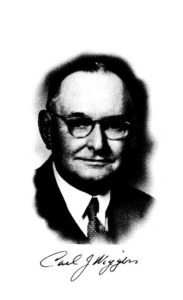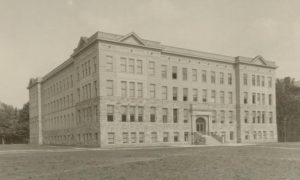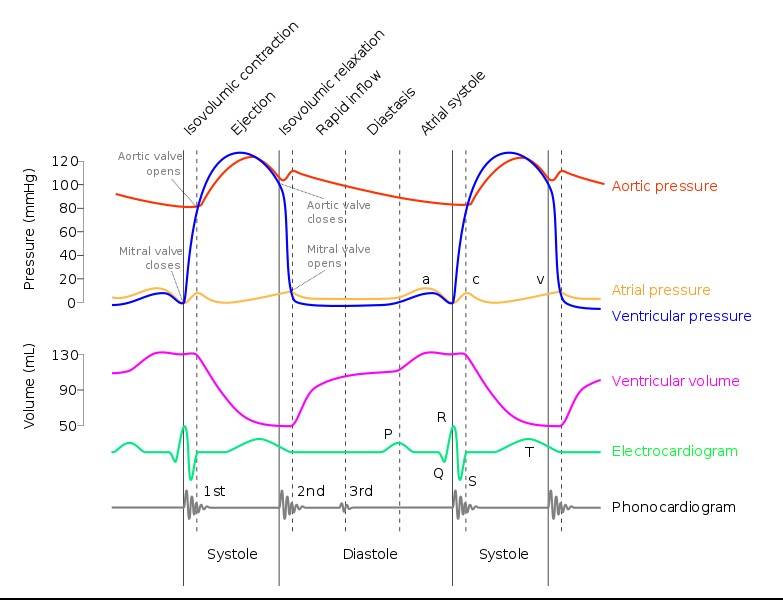Carl Wiggers – A Pioneering Figure in Cardiovascular Physiology
In my previous post about the history of AHA research grants, I became interested in another early figure within the AHA, Carl J. Wiggers. He was an Albert Lasker Award winner as well as the first editor-in-chief of the AHA journal Circulation Research. He was a fascinating figure.

Source: National Academy of Sciences1: http://www.nasonline.org/publications/biographical-memoirs/memoir-pdfs/wiggers-carl.pdf
Dr. Wiggers was born in Davenport, Iowa, USA in 1883 and showed promise in academics early. His high school teachers prodded him to pursue medicine. He couldn’t afford 4-years of college, so he chose to attend the University of Michigan over Johns Hopkins Medical School. At the time U of M only required a high school diploma, while JHU required a college degree. This is the Medical School building at the time (now the School for Natural Resources and the Environment).1

“Medical School; BL004458.” http://quod.lib.umich.edu/b/bhl/x-bl004458/bl004458. University of Michigan Library Digital Collections. Accessed: July 15, 2019.
During medical school, Dr. Wiggers was offered a paid student assistantship in physiology to perform research, and upon graduation from medical school in 1906, he was promoted to an instructor in physiology.1 In 1912, Wiggers traveled to German to study with Prof. Otto Frank.
Wiggers apparently smuggled some of Frank’s designs back to his lab in the USA, now at Cornell.2 Wiggers wanted to improve the measurement of blood pressure and intended to use Otto Frank’s reflecting mirror monometer, eventually developing a portable version to bring to the patient’s bedside.1
Although World War I was raging, in 1918, Carl Wiggers was persuaded to accept a position at Western Reserve (now Case Western Reserve) University where he remained throughout his career. Here he could establish his own cardiovascular research center.1
In 1952, the American Heart Association asked Wiggers to organize and edit a new journal focused on basic research on fundamental studies of the cardiovascular system, Circulation – Research.1 The first issue was published in 1953 as Circulation Research (no hyphen) and quickly positioned the journal as a leader in cardiovascular research.3

Origin and Early Years. Arnold M. Katz. Circulation Research.3 2001;88:1105–1111. https://doi.org/10.1161/hh1101.091991
At Western Reserve, Wiggers published over 400 original manuscripts and was instrumental in the career of many individuals including Nobel Prize winner Corneille Heymans in 1930. He was committed to training so much so that he often granted sole authorship to early investigators to further their careers.1
Wiggers is famous for his Wiggers Diagram as well as being a member of the National Academy of Sciences, an AHA Gold Hear Award recipient, and Lasker Award winner.1 He was a pioneer in physiology who continues to have a lasting impact today.

Wikipedia.4 Modified from ugawara M, Uchida K, Kondoh Y, et al. Aortic blood momentum–the more the better for the ejecting heart in vivo? Cardiovasc Res 1997; 33(2): 433–46)
References:
- Eugene M. Landis. 1976. Carl John Wiggers 1883-1963. National Academy of Sciences www.nasonline.org/publications/biographical-memoirs/memoir-pdfs/wiggers-carl.pdf
- Am J Physiol. 1998 Apr;274(4):L467-74. doi: 10.1152/ajplung.1998.274.4.L467.
- Origin and Early Years. Arnold M. Katz. Circulation Research. 2001;88:1105–1111. https://doi.org/10.1161/hh1101.091991
- Wikipedia. Modified from ugawara M, Uchida K, Kondoh Y, et al. Aortic blood momentum–the more the better for the ejecting heart in vivo? Cardiovasc Res 1997;